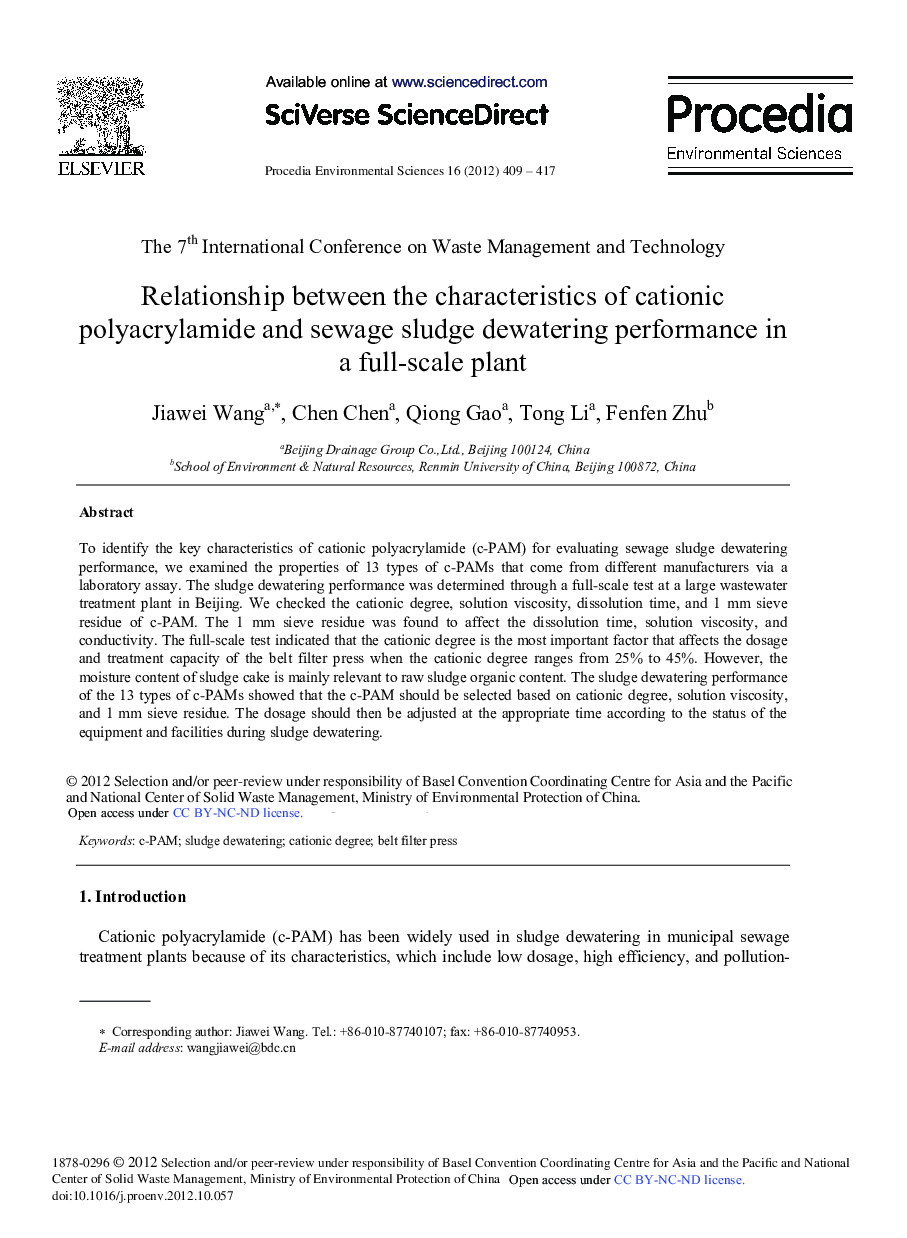| Article ID | Journal | Published Year | Pages | File Type |
|---|---|---|---|---|
| 4402685 | Procedia Environmental Sciences | 2012 | 9 Pages |
To identify the key characteristics of cationic polyacrylamide (c-PAM) for evaluating sewage sludge dewatering performance, we examined the properties of 13 types of c-PAMs that come from different manufacturers via a laboratory assay. The sludge dewatering performance was determined through a full-scale test at a large wastewater treatment plant in Beijing. We checked the cationic degree, solution viscosity, dissolution time, and 1 mm sieve residue of c-PAM. The 1 mm sieve residue was found to affect the dissolution time, solution viscosity, and conductivity. The full-scale test indicated that the cationic degree is the most important factor that affects the dosage and treatment capacity of the belt filter press when the cationic degree ranges from 25% to 45%. However, the moisture content of sludge cake is mainly relevant to raw sludge organic content. The sludge dewatering performance of the 13 types of c-PAMs showed that the c-PAM should be selected based on cationic degree, solution viscosity, and 1 mm sieve residue. The dosage should then be adjusted at the appropriate time according to the status of the equipment and facilities during sludge dewatering.
